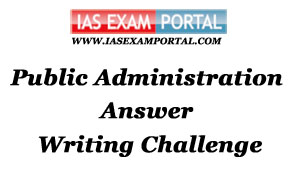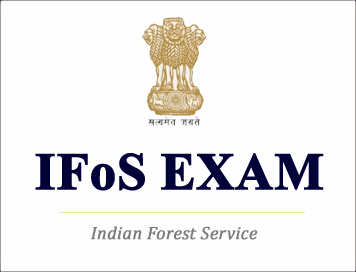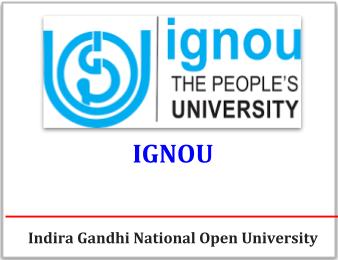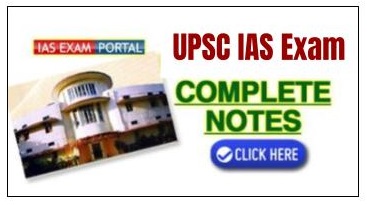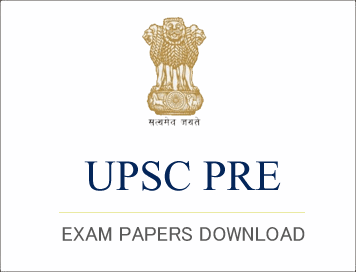
(Papers) UPSC Pre Topic Wise Papers : Indian History
2017 :
1. In the context of Indian history, the-principle of ‘Dyarchy (diarchy)’ refers to
(a) Division of the central legislature into two houses.
(b) Introduction of double government i.e.; Central and State governments.
(c) Having two sets of rulers; one in London and another in Delhi.
(d) Division of the subjects delegated to the provinces into two categories.
Ans. D
2. The object of the Butler Committee of 1927 was to
(a) Define the jurisdiction of the Central and Provincial Governments.
(b) Define the powers of the Secretary of State for India.
(c) Impose Censorship on national press.
(d) Improve the relationship between the
Government of India and the Indian States.
Ans. D
Exp: The Indian States committee appointed a committee under the chairmanship of Sir Harcourt Butler which was popularly known as the Butler Committee to investigate and clarify the relationship between the paramount power and Princes of Princely States in 1927 AD. Committee visited 16 states and submitted its report in 1929.
3. With reference to Indian freedom struggle, consider the following events :
1. Mutiny in Royal Indian Navy
2. Quit India Movement launched
3. Second Round Table Conference
What is the correct chronological sequence of the above events?
(a) 1-2-3
(b) 2-1-3
(c) 3-2-1
(d) 3-1-2
Ans. C
Exp: Mutiny in Royal Indian Navy: 18 February 1946, Quit India Movement: 8 August 1942, Second Round Conference: 1931.
4. With reference to the religious history of India,consider the following statements :
1. Sautrantika and Sammitiya were the sects of Jainism.
2. Sarvastivadin held that the constituents of phenomena were not wholly momentary, but existed forever in a latent form.
Which of the statements given above is/are correct?
(a) 1 only
(b) 2 only
(c) Both 1 and 2
(d) Neither 1 nor 2
Ans. B
Exp: The two major sects include – Digambar And Shwetambar.95% of the practices followed are same in both the sects.
5. Which one of the following was a very important seaport in the Kakatiya kingdom ?
(a) Kakinada
(b) Motupalli
(c) Machilipatnam (Masulipatnam)
(d) Nelluru
Ans. D
6. Consider the following pairs:
1. Radhakanta Deb – First President of the British Indian Association
2. Gazulu – Founder of the Lakshminarasu Madras Mahajana Chetty Sabha
3. Surendranath – Founder of the Indian Banerjee Association
Which of the above pairs is/are correctly matched?
(a) 1 only
(b) 1 and 3 only
(c) 2 and 3 only
(d) 1, 2 and 3
Ans. B
Exp: Madras Mahajana Sabha was established by
M. Veeraraghavachariar, G. SubramaniaIyer and
P. Anandacharluin May 1884
7. With reference to the difference between the culture of Rigvedic Aryans and Indus Valley people, which of the following statements is/are correct?
1. Rigvedic Aryans used the coat of mail and helmet in warfare whereas the people of Indus Valley Civilization did not leave any evidence of using them.
2. Rigvedic Aryans knew gold, silver and copper whereas Indus Valley people knew only copper and iron.
3. Rigvedic Aryans had domesticated the horse whereas there is no evidence of Indus Valley people having been aware of this animal.
Select the correct answer using the code given below:
(a) Only 1
(b) 2 and 3 only
(c) 1 and 3 only
(d) 1, 2 and 3
Ans. C
Exp:
• Indus people were basically peace loving.Their arms (swords, daggers, arrow-heads, and spears) were primitive in nature. No evidence of armour, helmet, body armour or shield is available. The Aryans, on the
contrary, were warlike people and were conversant with all kinds of traditional arms and armour and had devised a full-fledged ‘science of war’.
• The horse, which played a decisive role in the Aryan system of warfare, was not known to the Indus people. A few bones of horse and terracotta figure of a ‘horse-like animal’ have been unearthed from Surkotada (Gujarat) and still it has not been convincingly proved that the horse was employed by the Harappans.
• The Indus valley people knew the use of copper, bronze, silver, gold but not iron.
8. Who among the following was/were associated with the introduction of Ryotwari Settlement in India during the British rule?
1. Lord Cornwallis
2. Alexander Read
3. Thomas Munro
Select the correct answer using the code given below:
(a) Only 1
(b) 1 and 3 only
(c) 2 and 3 only
(d) 1, 2 and 3
Ans. C
Exp: Lord Cornwallis is associated with zamindari system.
9. The Trade Disputes Act of 1929 provided for
(a) The participation of workers in the management of industries.
(b) Arbitrary powers to the management to quell industrial disputes.
(c) An intervention by the British Court in the event of a trade dispute.
(d) A system of tribunals and a ban on strikes.
Ans. A
2016 :
1. What was the main reason for the split in the Indian National Congress at Surat in 1907?
(a) Introduction of communalism into Indian politics by Lord Minto.
(b) Extremists’ lack of faith in the capacity of the moderates to negotiate with the British Government
(c) Foundation of Muslim League
(d) Aurobindo Ghosh’s inability to be elected as the President of the Indian national Congress
Ans: B
Exp: Moderates believed in the policy of settlement of minor issues with the government by deliberations. But the extremists believed in agitation, strikes and boycotts to force their demands. Some nationalists led by LokmanyaTilak agitated against the moderate behaviour of congress against British rule.
2. The plan of Sir Stafford Cripps envisaged that after the Second World War
(a) India should be granted complete independence
(b) India should be partitioned into two before granting independence
(c) India should be made a republic with the condition that she will join the Commonwealth
(d) India should be given Dominion status
Ans: D
Exp: Cripps Mission proposed to give dominion status after the war as well as elections to be held after the war.
3. Regarding the taxation system of Krishna Deva, the ruler of Vijayanagar, consider the following statements:
1. The tax rate on land was fixed depending on the quality of the land.
2. Private owners of workshops paid an industries tax.
Which of the statements given above is/are correct?
(a) Only 1
(b) Only 2
(c) Both 1 and 2
(d) Neither 1 nor 2
Ans: C
Exp: Land revenue was the chief source of income.Land was divided into four categories for purposes of assessment, wet land, dry land, orchards and woods. Usually the share was one sixth of the produce. Land revenue could be paid in cash or kind. The rates varied according to the type of the crops, soil, method of irrigation, etc. Besides land tax, many professional taxes were also imposed. There were on shopkeepers, farm servants, workmen, posters, shoemakers, musicians etc. There was also a tax on property. Grazing and house taxes were also imposed. Commercial taxes consisted of levies, duties and
customs on manufactured articles of trade were also levied. Private owners of workshops paid an industries tax.
4. Which one of the following books of ancient India has the love story of the son of the founder of Sunga dynasty?
(a) Swapnavasavadatta
(b) Malavikagnimitra
(c) Meghadoota
(d) Ratnavali
Ans: B
5. With reference to the economic history of medieval India the term ‘Araghatta’ refers to
(a) Bonded labour
(b) Land grants made to military officers
(c) Waterwheel used in the irrigation of land
(d) Wasteland converted to cultivated land
Ans: C
Exp: The ‘ara-ghatta’ or rope-pot system of lifting water from open wells was probably invented in erstwhile India of the past.
6. With reference to the cultural history of India, the memorizing of chronicles, dynastic histories and epic tales was the profession of who of the following?
(a) Shramana
(b) Parivraajaka
(c) Agrahaarika
(d) Magadha
Ans: D
7. In the context of the history of India, consider the following pairs:
Term Description
1. Eripatti : Land, revenue from which was set apart for the maintenance of the village tank
2. Taniyurs : Villages donated to a single Brahmin or a group of Brahmins
3. Ghatikas : Colleges generally attached to the temples Which of the pairs given above is/are correctly matched?
(a) 1 and 2
(b) 3 only
(c) 2 and 3
(d) 1 and 3
Ans: A
Exp: Taniyurs- During the Chola regime Taniyurs developed out of major Brahmadeyas and temple settlements and came to include several hamlets and revenue villages. Eripatti -A special category of land, eripatti or tank land, was known only in south India. the revenue from which was set apart for the maintenance of the village tank. Ghatika: The Pallava kings of the ancient Tamil country who ruled from their capital city Kanchipuram from the 4th-9th centuries A.D were known as patrons of scholars and set up Ghatikas. The Ghatikas were the most important educational institutions in South India during ancient times and the most important Ghatika of the Pallavas was located in Kanchipuram. Inscriptions reveal that many of these kings looked after this institution with great care. It was well-known as an important educational centre even in the 4th century A.D and an epigraph of a Kadamba king (of ancient Karnataka) records that his ancestors, a scholar named Mayura Sharman, along with his teacher Vira Sharman came to this institution from faraway Goa. Ghatikas were separate from temples.
8. Consider the following:
1. Calcutta Unitarian Committee
2. Tabernacle of New Dispensation
3. Indian Reforms Association
Keshab Chandra Sen is associated with the establishment of which of the above?
(a) 1 and 3 only
(b) 2 and 3 only
(c) Only 3
(d) 1, 2 and 3
Ans: B
Exp: Raja Ram Mohan Roy is associated with Calcutta Unitarian Committee
9. The Montague-Chelmsford Proposals were related to
(a) Social reforms
(b) Educational reforms
(c) Reforms in police administration
(d) Constitutional reforms
Ans: D
10. Satya Shodhak Samaj organized
(a) A movement for upliftment of tribals in Bihar
(b) A temple-entry movement in Gujarat
(c) An anti-caste movement in Maharashtra
(e) A peasant movement in Punjab
Ans: C
Exp: The main aim was to liberate the social shudra and untouchable castes from exploitation and oppression.

